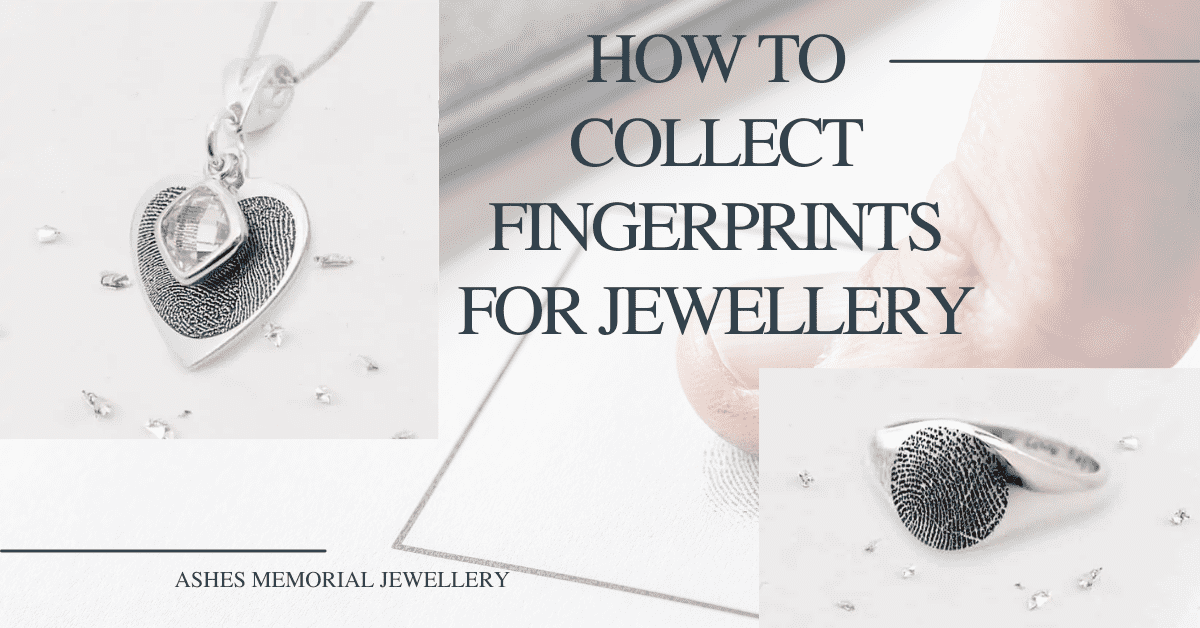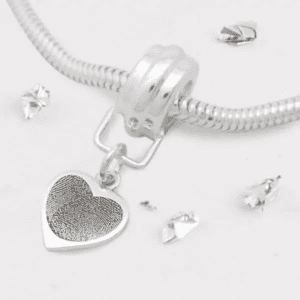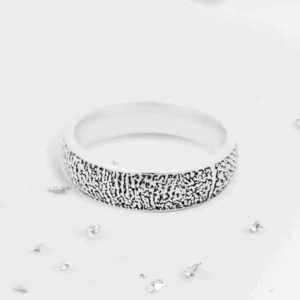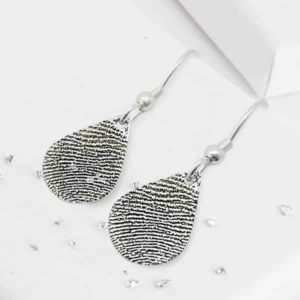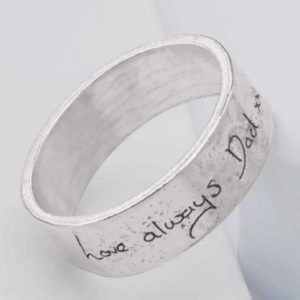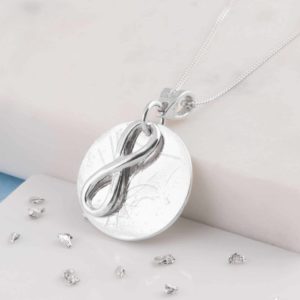 How to Collect Fingerprints for Jewellery
How to Collect Fingerprints for Jewellery
Fingerprint jewellery is a growing trend in the memorial jewellery market. As people live longer and get married later, there is a steady rise in the number of grandparents who live much longer than in previous decades.
This has increased the demand for fingerprint jewellery among older adults, as it helps them commemorate their children and grandchildren.
Since fingerprints are unique to each person, fingerprint jewellery is also an excellent way to remember someone who has passed.
To explain how to collect fingerprints for jewellery, we’ve put together a comprehensive guide to everything you need to know about collecting fingerprints for your custom pieces.
After reading this guide, you’ll know precisely what materials you should use to take detailed prints and the best techniques.
What is a fingerprint?
A fingerprint is an impression left on an object or surface by the ridges on your fingertips. These ridges are unique to you, and you cannot change or remove them. They help identify you as a person and may be used to track your movements and activities.
People usually leave fingerprints when touching something, whether a surface or an object. Fingerprints are formed when the foetus is inside the mother’s womb.
When the foetus touches the amniotic fluid, the fluid gets mixed with the oils on the foetus’ skin. The combination of fluid and skin oils creates an outline of the foetus’ fingers and leaves a fingerprint.
What will you need to collect fingerprints for jewellery?
– A clean and dry, dust-free surface: You need to ensure that your fingerprint collection surface is clean, dust-free, and completely free of dirt, oils, or any other contaminants that could leave a mark on your fingerprint.
You can wipe down surfaces in your home with a clean cloth and a little water to ensure that they are clean enough for fingerprint collection.
– Graphite from a standard pencil: This is the best material for collecting fingerprints. You can use a pencil with graphite in it, or a mechanical pencil will also work fine.
– Sticky Tape- This is where the transfer of the fingerprint takes place, so have a space where you can also stick the tape.
– A clean, absorbent piece of paper: You need to place the paper or cloth against the graphite on your fingerprint collection surface to capture your fingerprints.
– A clean, dry surface to place the paper with the fingerprints: The surface on which you place the paper with fingerprints must be clean and dry.
– A camera: You’ll need a camera to take clear photos of your fingerprints.
Make sure your fingers are clean & dry.
– If you’re taking fingerprints from your hands, ensure that your fingers are clean and dry. If you have washed your hands, they are most likely clean enough but ensure that you dry them well with a paper towel before taking fingerprints.
Cover a space on white paper with graphite from a pencil
– You can either take several fingerprints on one piece of paper or take one fingerprint on multiple pieces of paper. It is completely up to you what you are comfortable with.
– You can either take the entire pad of the pencil to cover a portion of the piece of paper or take the lead of the pencil and lightly press it against the paper.
The latter is the more professional way to take detailed prints, as light pressure leaves a more clear fingerprint.
Place your finger over the shaded patch on the paper.
– You need to place your finger over the shaded graphite patch on the piece of paper.
– If you have taken a single fingerprint on multiple pieces of paper, carefully lift the fingerprints off the paper and place them on the shaded graphite one by one.
Place your finger on the sticky side of some tape and gently peel the finger off.
– If you have taken a single fingerprint on multiple pieces of white paper, carefully lift the fingerprints off the paper and place them directly on the sticky side of some tape.
– Gently peel the fingerprints off the tape after they’ve been stuck down securely.
Stick the tape onto a separate, clean piece of white paper.
– Place the fingerprints on the sticky side of some tape onto the clean paper.
– Make sure the paper is large enough to include the fingerprint and about 1 centimetre of the paper on each side.
Take clear images
– Place the paper with the fingerprints on a flat surface or a table.
– Take a clear picture of the fingerprint paper from above with good light.
– You can take a picture using a digital camera or your smartphone.
– You can also use a scanner to scan the fingerprint paper.
Conclusion
Fingerprint jewellery is a perfect way to commemorate a loved one whose passing you’re still mourning, and exploring how to collect fingerprints for jewellery couldn’t be simpler.
It’s also an excellent way to celebrate a family member’s special occasions, such as a birthday, graduation, wedding, or any other milestone they’re celebrating.
People often wonder how they can collect fingerprints for memorial fingerprint jewellery. This article will help you answer that question.
Follow the instructions above, and you can successfully collect fingerprints for your future memorial jewellery design.



